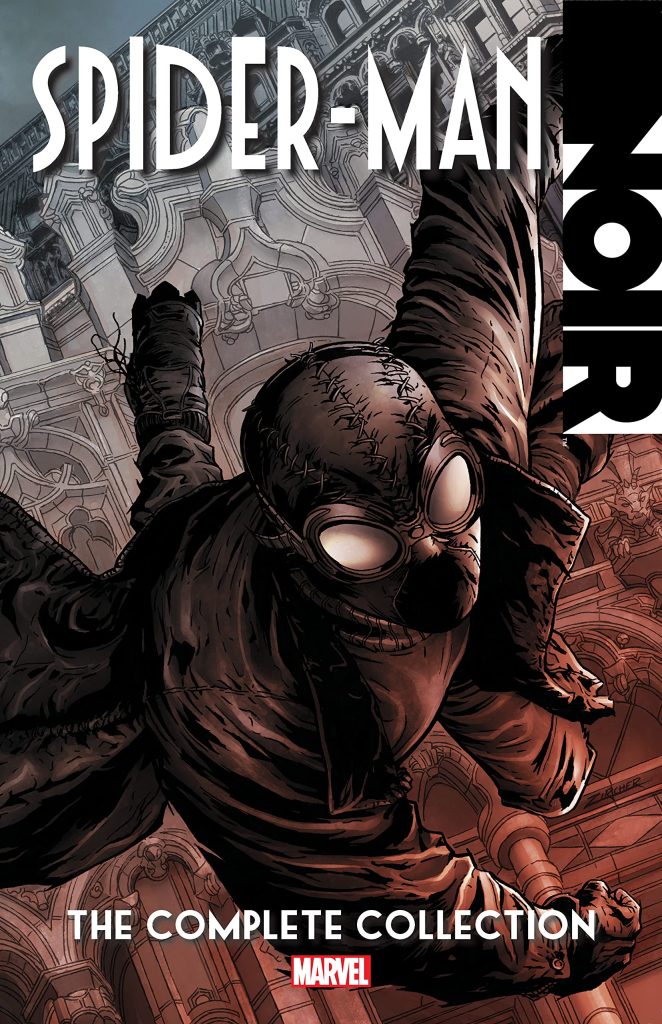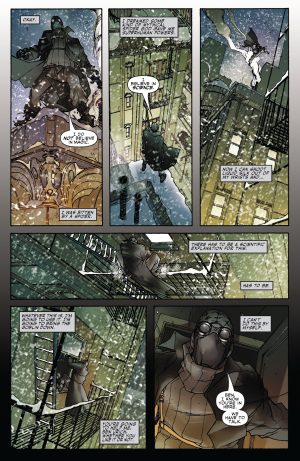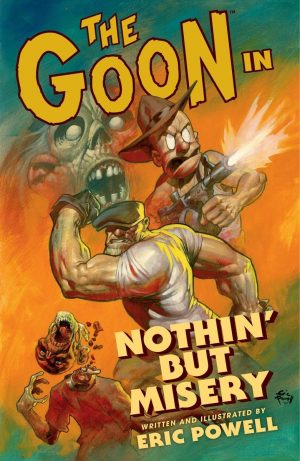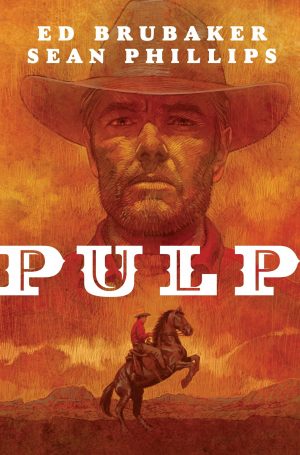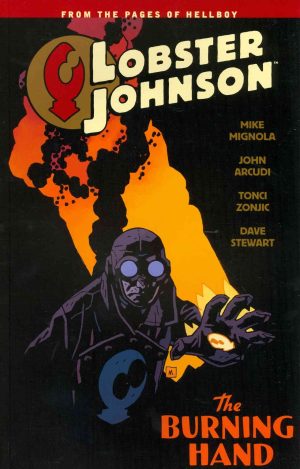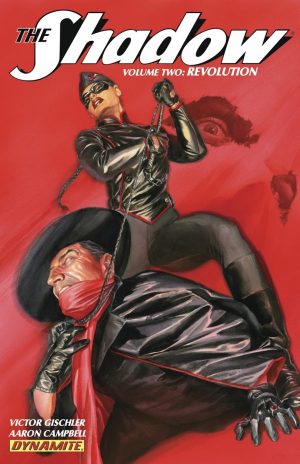Review by Frank Plowright
The 21st century’s second decade has seen an explosion of alternative Spider-Men at Marvel, collectively found in both Spider-Verse and Spider-Geddon. One of the earliest was Spider-Man Noir, introduced by David Hine, Fabrice Sapolsky and Carmine di Giandomenico as part of an entire line of 1930s pulp analogues to Marvel heroes.
There’s a formula applied to alternate world stories involving the hero’s identity and powers being the same, but with the occasional variation in circumstances, while visual differences provide the primary alterations. In this case Hine and Sapolsky take their cue from the brutality of pulp fiction, merging that with the more innocent times of Spider-Man’s early days, with contrast being a theme employed throughout the two main stories here. May Parker is a crusading social activist, yet Peter as Spider-Man has no concerns about killing.
Redesigned versions of Spider-Man’s villains are stunningly supplied by di Giandomenico, the most startling being the Vulture repurposed as a version of Murnau’s Nosferatu, a film contemporary with the period. Hine and Sapolsky refer to cinema again with Doctor Octopus in their second story, gloriously recast by di Giandomenico as Dr. Strangelove. Di Giandomenico’s remaining art is rich with period detail and gloomy atmosphere, and he also supplies a new way of indicating Spider-Sense.
A level of unpleasantness not usually associated with Spider-Man typifies both main stories, especially the second’s delve into Nazi experiments on people, but that’s in keeping with the noir ethos, and while the first is slightly better than the second, both are readable.
Hine and Sapolsky return for the shorter encounter with Mysterio, on this world a carnival magician with greater ambition. The Noir Kingpin is also seen in a clever plot diminished by having to tie into other matters. Richard Isanove’s art is technically good, if a little stiff, but combined with his colouring it makes the world too bright and glamorous. It’s a technicolour film rather than The Maltese Falcon.
The Spider-Verse crossover is integral to Roger Stern and Bob McLeod’s brief contribution, taking Spider-Man Noir out of his world and so deleting almost everything good about him. That’s at least restored for Hine and Sapolsky’s closer, a pulp adventure originally produced as a video comic, which explains the emphasis on movement. The layouts of Tim Eldred are rendered by Paco Diaz, but it lacks the depth of the longer material.
While this was truthfully the complete collection of Spider-Man Noir stories when published in 2019, the very good Twilight in Babylon was issued in 2020, and so isn’t included. This collection appears to have had a very limited print run, so interested readers are better advised to search out the original publications as Marvel Noir: Spider-Man, Marvel Noir: Spider-Man – Eyes Without a Face, and Edge of the Spider-Verse.
